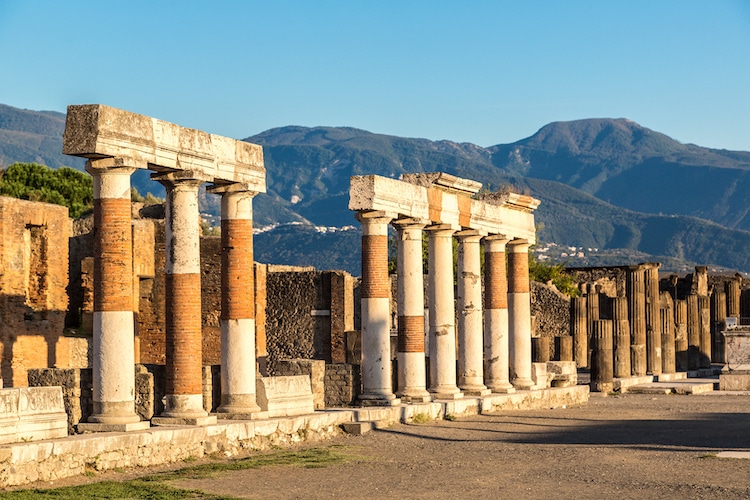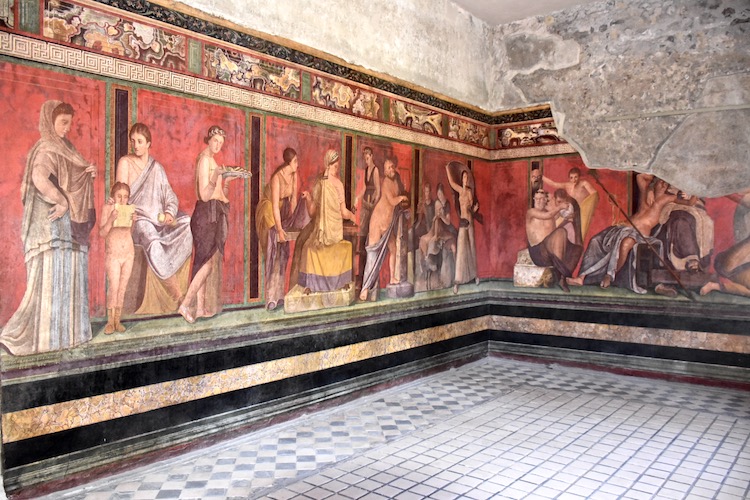
Photo: bloodua/Depositphotos
Nearly 2,000 years ago, Pompeii was a bustling city located just outside of Naples in southern Italy. The flourishing Roman center—likely founded in the 7th or 6th century BCE—became known for its vibrant culture and life. The ancient city was alive with food markets, temples, restaurants, baths, and a population of 11,000 to 15,000 people. However, life in Pompeii came to a permanent standstill in the summer of 79 CE, when the nearby Mount Vesuvius volcano erupted and covered the entire city in a blanket of volcanic ash. The massive cloud of ash buried everything and killed everyone in its path.
For centuries, the world has been piecing together the events of this destructive event. The Vesuvius ash-preserved ruins of a once-thriving Pompeii have provided historians with insight into what life in that time period and place was like; but now, thanks to Zero One Studio (an Australian tech company that focuses on computer animation), viewers have a chance to experience Pompeii’s life more vividly.
A Day in Pompeii, an exhibition held at the Melbourne Museum in 2009, gave more than 330,000 visitors a shockingly realistic animation depicting the city’s final hours. The 3D theater installation perched the viewer atop a villa, with a bird’s-eye view of the oncoming volcano eruption. It provided an animated fact-based visual interpretation of the city’s fate over the course of 48 hours, complete with visual flames, debris, and destruction of a fascinating, yet frightful moment in ancient history.

Photo: jeramey.lende.gmail.com/Depositphotos
Though we now have a lot more insight into the final hours and the history of this once-vibrant city, Pompeii remained buried and frozen in time for nearly 1,700 years since Mount Vesuvius’ eruption. Lost, forgotten, unseen, and untouched, Pompeii was rediscovered and properly unearthed in 1748. It was during these excavations that archeologists discovered the remarkable level of preservation under mountains of volcanic ash, marking the destination an archeological treasure trove.
Despite its destruction, the ancient city of Pompeii remains renowned for its well preserved Roman ruins—including, entire buildings, baths, houses, tools, wine bottles, and uncooked loaves of bread in an oven. Beautiful frescoes, graffiti, and polychromatic wall paintings were left intact, depicting some of the earliest known still-life paintings, secular portraits, religious iconography, and erotic imagery. Pompeii boasted frescoes and architecture as well as important construction projects, such as an aqueduct and amphitheater. The city also played a vital part in trade and commerce due to its prime location in proximity to the strategic roads built by Romans and the Mediterranean basin. Pompeii may have faced a tragic end, but it will not soon be forgotten.
Watch Pompeii come back to life with computer-generated imagery, and then entombed by Vesuvius–again.
Pompeii: Website | Instagram | Facebook | YouTube
h/t: [Open Culture]
Related Articles:
Pompeii’s Fully Preserved Ancient “Snack Bar” Open to the Public
Stunning Drone Video Captures Sweeping Views of the Ancient Ruins of Pompeii
Herculaneum: Pompeii’s Sister City That Survived a Volcanic Eruption in Ancient Rome
1,900-Year-Old Ceremonial Chariot Has Been Discovered Near Pompeii
